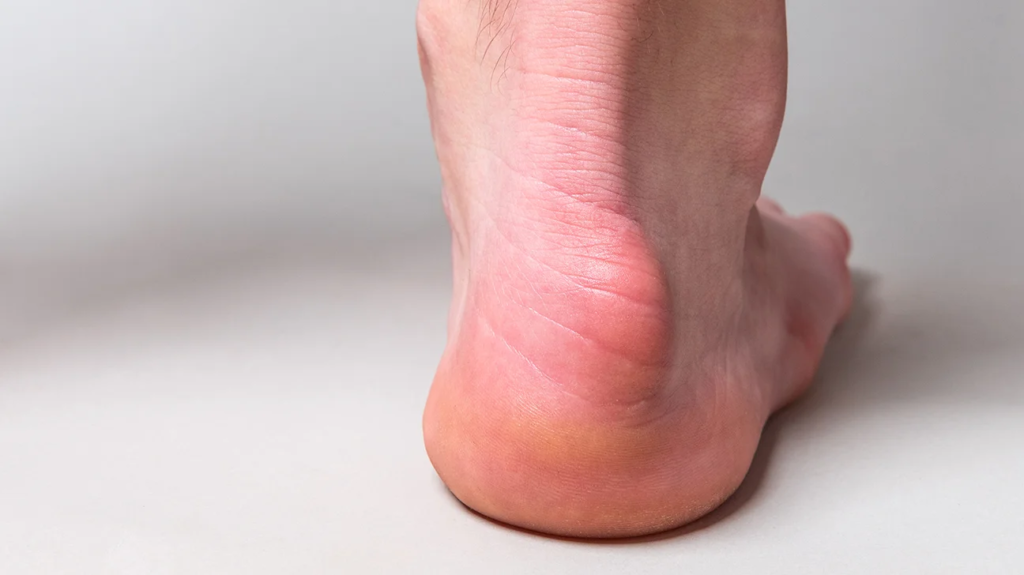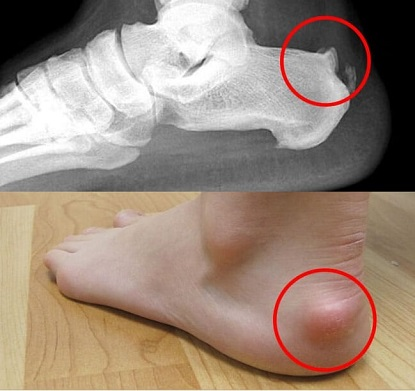Welcome back to the Feet Street Podiatry Clinic blog! In this post, we want to shed light on a condition that affects many of our patients – Haglund’s Deformity. This bony enlargement at the back of the heel can be troublesome, but fear not! We are here to explain the causes, symptoms, and effective management strategies for this condition. So, let’s dive in and ensure your feet stay on the path to wellness!




What is Haglund’s Deformity?
Haglund’s Deformity, also known as “pump bump,” is a condition that results from the enlargement of the bony prominence at the back of the heel. It occurs due to chronic pressure and friction against the Achilles tendon and the surrounding soft tissues. This friction, often caused by poorly fitting shoes, can lead to inflammation and the formation of a bony bump.
Causes of Haglund’s Deformity
Several factors can contribute to the development of Haglund’s Deformity, including:
- Foot Structure: People with high arches or tight Achilles tendons may be more prone to this condition.
- Footwear Choices: Wearing shoes with rigid backs or improper fitting footwear, especially those with a tight heel counter, can exacerbate the problem.
- Physical Activities: High-impact activities or repetitive stress on the heels, like running or jumping, can contribute to the development of Haglund’s Deformity.
- Genetic Predisposition: Some individuals may have an inherited tendency to develop this condition.
Identifying the Symptoms
Recognizing the early signs of Haglund’s Deformity is crucial for timely intervention. Keep an eye out for the following symptoms:
- Visible Bump: A noticeable bony bump at the back of the heel is a primary characteristic of Haglund’s Deformity.
- Pain and Tenderness: Discomfort and tenderness around the bump area, especially when pressure is applied or during movement.
- Swelling and Inflammation: The affected area may become swollen and red, indicating inflammation.
- Blisters: Irritation from friction can lead to the formation of painful blisters over the bump.
- Managing Haglund’s Deformity
The good news is that Haglund’s Deformity can often be managed effectively through conservative treatments. If you suspect you may have this condition, we recommend the following steps:
- Footwear Modifications: Choose shoes with a soft and padded back, ensuring they fit properly and do not rub against the heel.
- Orthotics: Custom orthotic inserts can help alleviate pressure on the heel and correct any biomechanical issues that may be contributing to the condition. At Feet Street Podiatry, we can assess your condition and determine if orthotics would be beneficial.
- RICE Therapy: Rest, Ice, Compression, and Elevation can help reduce inflammation and alleviate pain.
- Physical Therapy: Specific exercises and stretches can improve flexibility and strength in the Achilles tendon and surrounding muscles.
- Medication: Over-the-counter pain relievers can temporarily ease discomfort and reduce inflammation.
- Heel Lifts: In some cases, heel lifts or pads may be prescribed to reduce pressure on the affected area.
- Avoiding High-Impact Activities: Temporarily avoid activities that exacerbate the condition to allow the heel to heal.
When to Seek Professional Help
If your symptoms persist or worsen despite following these management strategies, it’s crucial to schedule an appointment with our team at Feet Street Podiatry Clinic in Belfast. We have experienced podiatrists who can accurately diagnose your condition and tailor a comprehensive treatment plan for your unique needs.
Conclusion
At Feet Street Podiatry, your foot health is our priority. Haglund’s Deformity may be a challenging condition, but with early identification and appropriate management, you can maintain happy, healthy feet. Remember to choose your footwear wisely, listen to your body, and seek professional help when needed. Stay proactive, and let’s keep walking towards pain-free and comfortable steps together!
We hope you found this blog post informative and insightful. If you have any questions or need assistance, don’t hesitate to reach out to us. Until next time, take care of your feet and stay active!
